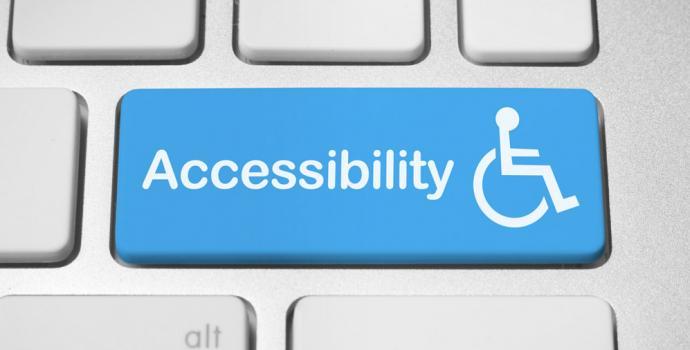
Keep calm and carry on with web accessibility
Web Accessibility… the mere mention can strike fear into hearts of otherwise courageous people.
What should we be doing? Are we doing enough? Are we compliant and to what? What are the risks?
Previously we’ve written about Web Prophets success in meeting technical accessibility criteria with our adoption of Drupal aGov.
Here we offer some general tips on approaching ‘web accessibility’ with confidence.
1. Web accessibility rule number one: Don’t panic!
It’s easy to be daunted when thinking about accessibility: the number of pages and sites, content authoring bad habits or the age of the technology.
Web accessibility is the process of removing barriers to website interactivity for all users.
In other words there is no end point; technology, legislation, standards and expectations change and evolve. Your job is to start somewhere and get the support and investment you need to manage the process.
2. Do something
‘Doing nothing’ is not an option. As legislation and litigation catches up in Australia be assured that any attempts to improve accessibility will be better than none.
3. Prioritise activities
Identify your website’s essential tasks and start by fixing problems with users completing them. Prioritising in this way brings focus to your decision-making and makes the most of your resources and time. Tasks may include:
- become a volunteer
- sign up for the newsletter
- donate
4. Document decisions
It’s important to communicate your organisation’s strategy and progress to a range of stakeholders: people using your websites, staff and management, funding bodies and auditors.
Stakeholders need to know action is being taken to improve accessibility on the website. Write it down so people can see what’s happening and why.
5. Talk to your users
Having chats with users can often uncover problems you just could not be aware of. The surprising news is that many problems may be easily fixed.
Furthermore, including colleagues in on these chats can help you take them on the accessibility journey.
6. Review your procurement processes
It’s difficult to retrofit accessibility into a website. Unless you have all the skills in-house, you’ll need to outsource and, as with other things your organisation does, website building or redesign requires working with partners. Make asking for accessibility references and credentials part of your procurement processes.
7. Be systematic
You don’t have to reinvent the wheel here. Use existing systems to collect feedback. For example, if you’re part of a larger organisation, you’ll have a system for logging IT and network problems. When someone makes a ‘complaint’ or gives feedback about the website – just log it. You can’t manage what you don’t measure and this is another way of documenting progress towards web accessibility.
8. Change the way you think about accessibility
Sometimes less is actually more. Striving for web accessibility needn’t been seen as a limitation but as a source of innovation for finding better ways to deliver information and functionality on your website. For example, maybe your web forms aren’t accessible. This is a great opportunity to simplify the forms and really understand what information you’re trying to get from your users.
9. Choose an Accessibility Standard and get help
Believe it or not there are several standards around. Take some time to research the standards, particularly if your organisation is in receipt of government funding, and be realistic about what you can achieve given your resources and knowledge.
This Vision Australia page has a great collection of tools, tip sheets and links to resources at Digital Access Resources Downloads.
Also, consider talking to an accessibility expert. A quick upfront audit may save you time and money further down the path.
10. Finally, life’s just better with a plan
By now you should recognise web accessibility as an ongoing process. A process we can manage and control.
An organisation’s goal might be ‘complete compliance with WC3 AAA standards’, but only an agreed, well-communicated plan will get you there.
A plan instills confidence in stakeholders and, above all, lets you get on with it!
Related Articles
Web Accessibility… the mere mention can strike fear into hearts of otherwise courageous people.
What should we be doing? Are we doing enough? Are we compliant...
Web Accessibility… the mere mention can strike fear into hearts of otherwise courageous people.
What should we be doing? Are we doing enough? Are we compliant...
Web Accessibility… the mere mention can strike fear into hearts of otherwise courageous people.
What should we be doing? Are we doing enough? Are we compliant...






Add new comment